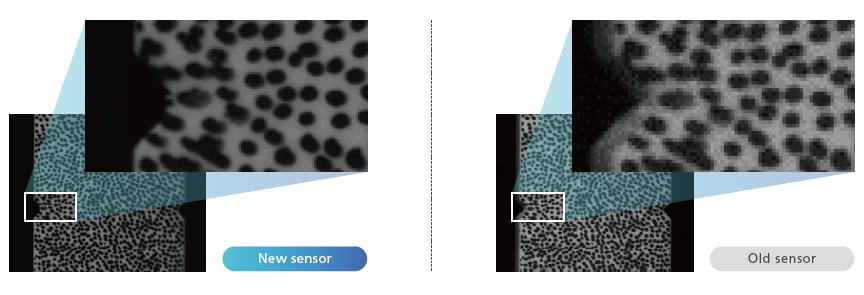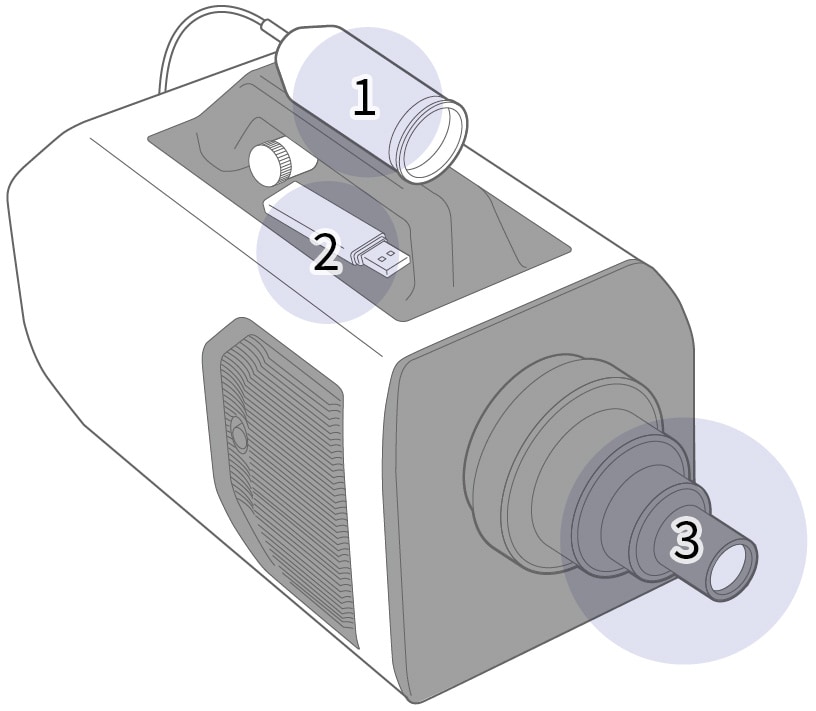HyperVision HPV-X3 - Features
NEWHigh-Speed Video Camera
-
High Image Resolution Across an Impressive Range of Recording Speeds
-
Improved Image Sensor Resolution for Improved DIC Analysis Performance
-
External Input/Output Functionality for Synchronized Image Capture
-
Flexible Design and Superior Ease-of-Use
-
Camera Synchronization and Dual-Camera Control
-
Software Development Kit (SDK) for Improved System Development
High Image Resolution Across an Impressive Range of Recording Speeds
-
Burst Method for Ultra High-Speed Recording
High-speed cameras typically store images in memory located separate from the image sensor. Image data is transferred serially from each sensor pixel to the memory in a sequential arrangement through output connections that number relatively few compared to the number of pixels in the image. This configuration makes ultra high-speed recording at 1 Mfps or above hard to achieve.
The burst method used by Shimadzu places enough memory to record the frame capture capacity of the image sensor directly on the sensor and links every pixel to this memory through individual connections. This configuration allows signals to be transferred from the pixels to memory in a fully parallel arrangement for ultra high-speed recording at 20 Mfps. This design removes the limitations imposed by sequential signal transfer via a restricted number of connections, thereby allowing for ultra high-speed, high-resolution image recording. 
Three Times Higher Image Sensor Resolution (300,000 pixels)

The new image sensor has three times the number of pixels and six times the amount of memory thanks to a reduction in memory size. This technology is used to achieve an improved image resolution of 300,000 pixels with no negative effect on frame rate. The higher image sensor resolution also provides more accurate measurements in applications that use Digital Image Correlation (DIC) technology.
Note: FTCMOS and FTCMOS3 sensors were developed through joint research with Professor Shigetoshi Sugawa of Tohoku University. Patents: 04931160, 04844853, 04844854
Improved Image Sensor Resolution for Improved DIC Analysis Performance
- The resolution of the HPV-X3 image sensor is three times that of its predecessor. The resulting improvement in DIC analysis performance was verified by simultaneously capturing images of a single specimen with the new and old sensor and comparing the results. The resulting DIC image clearly shows a build-up of strain in the material just before crack initiation.
-

External Input/Output Functionality for Synchronized Image Capture
Synchronizing image capture with the subject and an illumination source is an extremely important aspect of high-speed visualization. In addition to having an existing external output feature that synchronizes subject illumination by sending the image capture timing signal to an external illumination device, the HPV-X3 comes with an external input and frame synchronization features that allow 256 individual frames to be synchronized to an external signal. With this technology, the camera can begin image exposure in response to a timing signal with an accuracy of 5 nsec. The timing accuracy of the HPV-X3 has also been improved from S10 nsec to 5 nsec. These improvements provide the user with highly reliable synchronized image capture.

Flexible Design and Superior Ease-of-Use
The HPV-X3 is designed to combine flexibility with excellent ease-of-use. The camera comes with a variety of features that ensure it meets the needs of a wide range of users.

1. Illumination
A utility screw mount placed on top of the camera can be used to attach fixtures for illumination or other apparatus.
2. Handle tray
A tray built on the top of the camera can be used as temporary storage for tools and fixtures.
3. Microscope
The camera can be used with a microscope by mounting a commercially available F-C mount lens adapter.
Camera Synchronization and Dual-Camera Control
The control software can control two cameras. This allows the user to capture images with two cameras simultaneously and then play the recorded images on a single PC.
Software Development Kit (SDK) for Improved System Development
For seamless integration of the HPV-X3 with commercial DIC software and user-developed analytical software, a software development kit (SDK)* has been published.
Note: Purchase of a separate SDK license certification kit is required to operate the HPV-X3 with an SDK.


